No products in the cart.
NEWS
Growing Deliciously: Top Drought-Tolerant Fruit Trees for Your Garden
In a world where conserving precious resources like water is becoming increasingly vital, designing gardens that thrive with less moisture is a smart and sustainable approach. This focus on water-wise landscaping naturally extends to the edible garden. Imagine enjoying the sweet taste of fruit grown right in your backyard, knowing the trees producing it are resilient and require less water than traditional varieties. At Biogarden.Asia, we understand the importance of cultivating abundance responsibly, and exploring drought-tolerant fruit trees offers a fantastic opportunity to do just that.
These remarkable trees are specifically adapted to withstand periods of dryness and heat that would cause stress or even failure in less resilient species. Incorporating them into your landscape contributes not only to water conservation but also provides a rewarding harvest of fresh, homegrown fruit. While many fruit trees demand consistent moisture, especially during establishment and fruiting, certain varieties have evolved mechanisms to survive and even flourish in drier conditions.
Essential Tips for Growing Drought-Tolerant Fruit Trees
While the trees listed below are known for their ability to tolerate drought once established, remember that all newly planted trees require regular watering to help their root systems get started. This need significantly decreases as the tree matures. Using mulch around the base of young trees is a simple yet highly effective strategy to help the soil retain moisture, reduce evaporation, and suppress weeds that compete for water.
Always select tree varieties suited to your specific climate zone and soil type. Drought-tolerant varieties are generally a perfect fit for warmer regions, but for those in cooler zones, growing fruit trees in containers can be a viable option. Container growing allows you to provide protection during winter by moving plants indoors. However, be aware that container plants typically require more frequent watering compared to trees planted directly in the ground.
Let’s explore some of the best fruit tree options that can add beauty, shade, and delicious produce to your water-wise garden.
1. Fig
Figs are truly a luxurious fruit, equally at home in sweet desserts or savory dishes. Originally from the Mediterranean, fig trees (Ficus carica) are naturally suited to hot, dry environments and can persist with surprisingly little water once established.
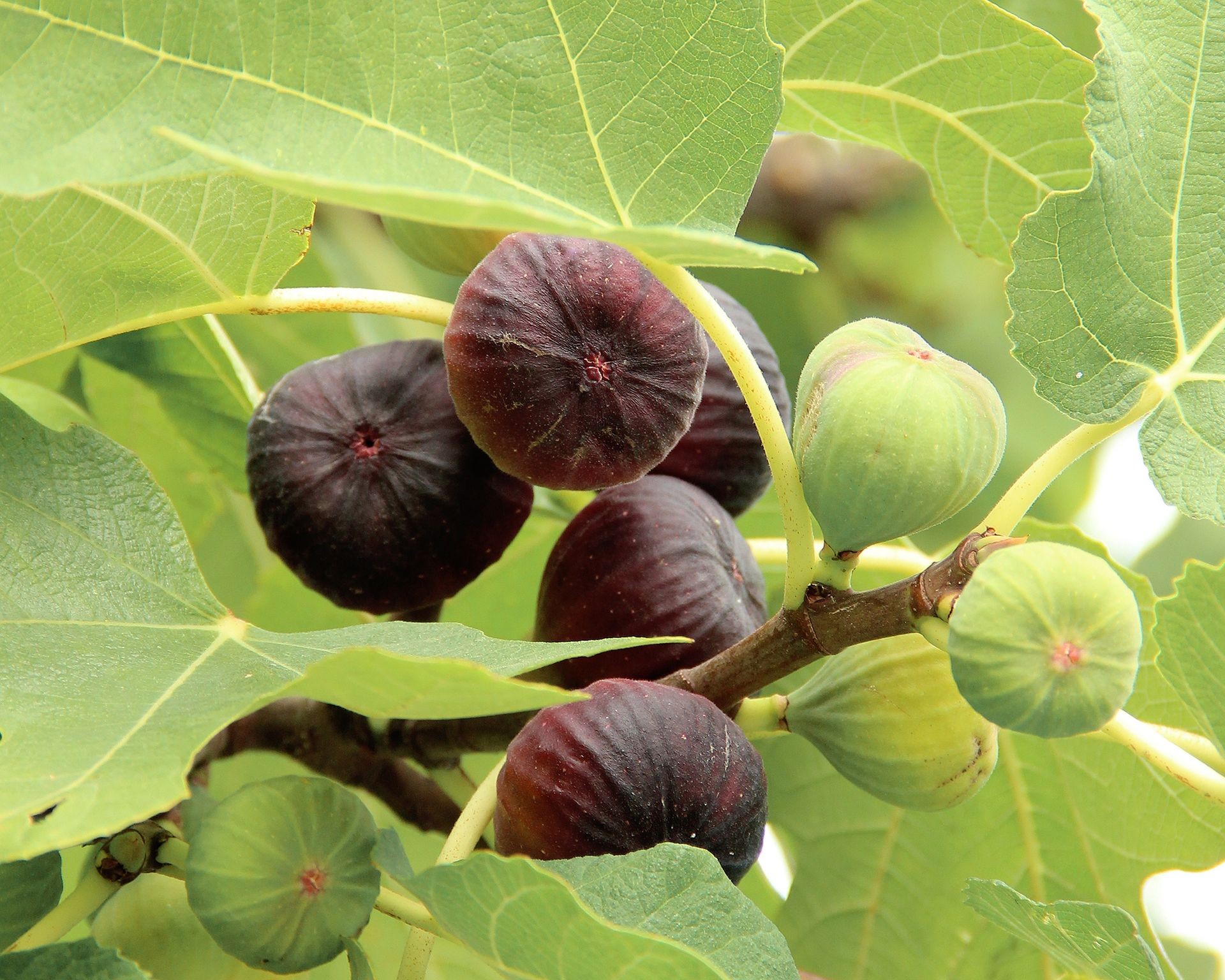 Ripe green and purple figs growing on a branch of a fig tree
Ripe green and purple figs growing on a branch of a fig tree
These trees thrive in full sunlight and prefer loamy, fertile, well-drained soil with a slightly acidic to neutral pH (around 6.0 to 6.5). They are relatively low-maintenance, generally needing only annual pruning to maintain shape and health, and a layer of mulch. Remember to water regularly during the first year or two to ensure they establish well.
2. Pomegranate
Widespread throughout the Middle East and Mediterranean, pomegranate trees (Punica granatum) yield beautiful, nutrient-rich fruits steeped in history and symbolism. These trees are perfectly adapted to hot, arid climates. Growing pomegranates from seed is relatively easy, and you can often see fruit production begin within one to three years.
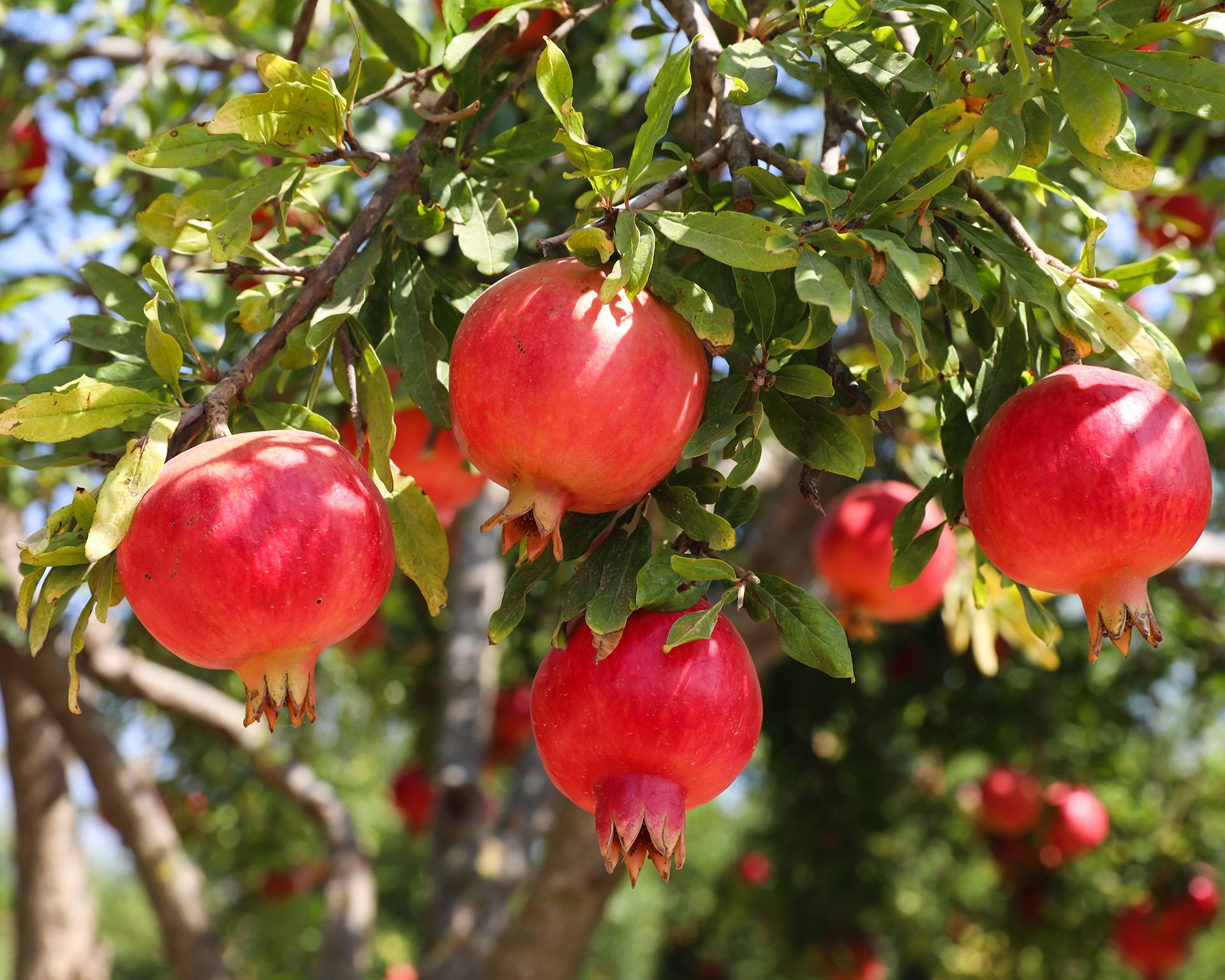 Bright red pomegranate fruits hanging from a tree branch
Bright red pomegranate fruits hanging from a tree branch
Soil pH is a key factor for pomegranates, as they prefer slightly alkaline conditions, ideally up to pH 7.5. If your soil is acidic, consider growing them in containers, which also provides the flexibility to move them for winter protection if needed. Position pomegranates in a sunny location and water young trees frequently until their root systems are well-developed. Once established, their drought tolerance is remarkable. Applying a mulch layer in the fall, perhaps with well-rotted compost, can be beneficial. Pomegranate trees typically fruit on older wood and usually require minimal pruning.
3. Jujube
Also known as Chinese dates, jujube trees (Ziziphus jujuba) bring an exotic touch to the garden landscape. The small, sweet fruits offer a taste similar to apples when fresh. If allowed to dry on the tree, they develop a wrinkled texture resembling dates.
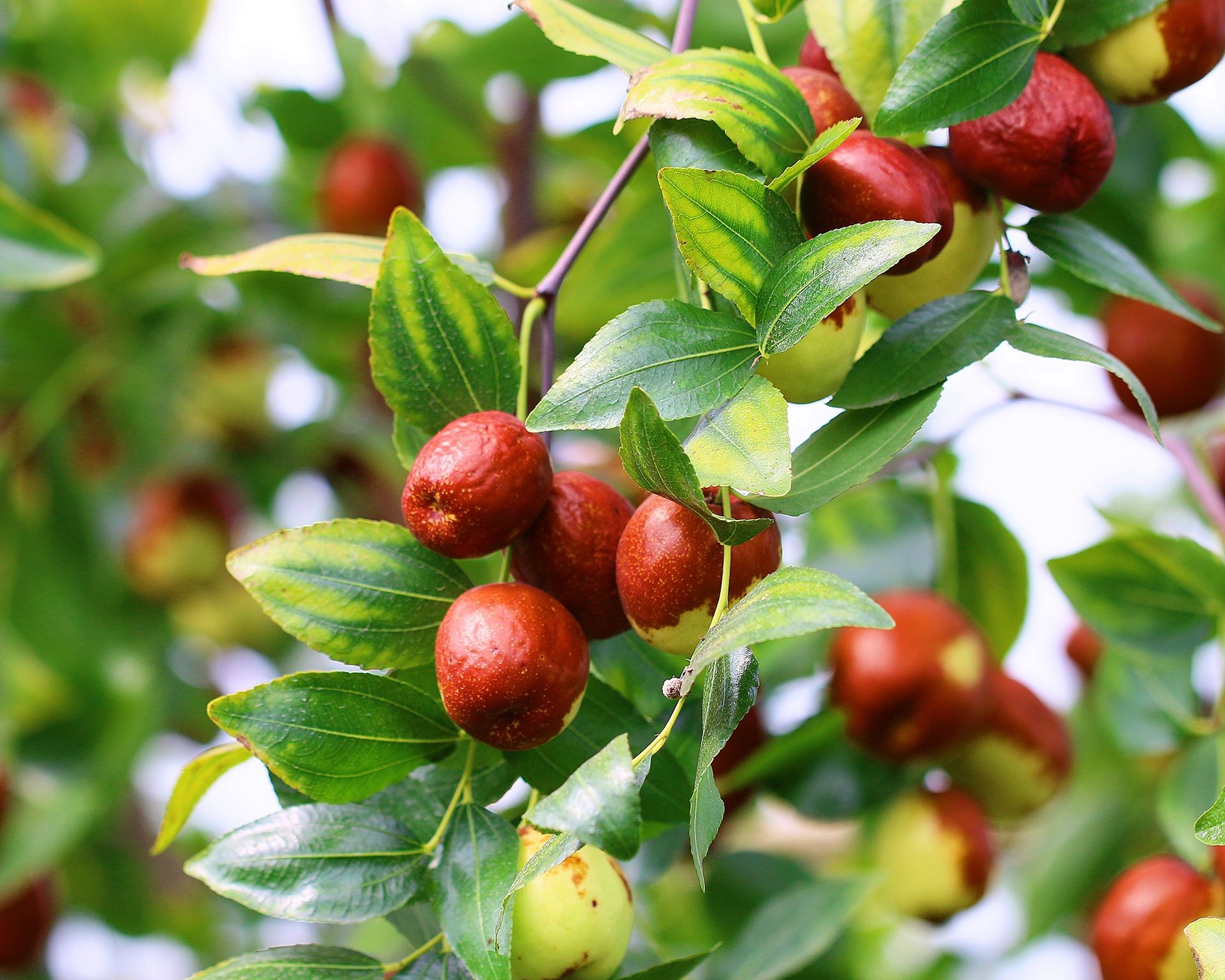 Clusters of small, reddish-brown jujube fruits on a tree
Clusters of small, reddish-brown jujube fruits on a tree
These adaptable trees thrive in full sun and perform best in sandy, well-drained soil. Once established, they are incredibly low-maintenance and highly drought-tolerant. While they can survive long dry spells, occasional watering during prolonged drought can improve fruit production. A single application of fertilizer at the beginning of the growing season is generally sufficient. Jujubes are surprisingly frost-hardy, making them suitable for a wide range of climates.
4. Date Palm
A prominent feature in the landscapes of South Asia, the Middle East, and North Africa, date palms (Phoenix dactylifera) are a popular choice in warmer regions. Varieties like the Medjool date are particularly prized for their natural sweetness.
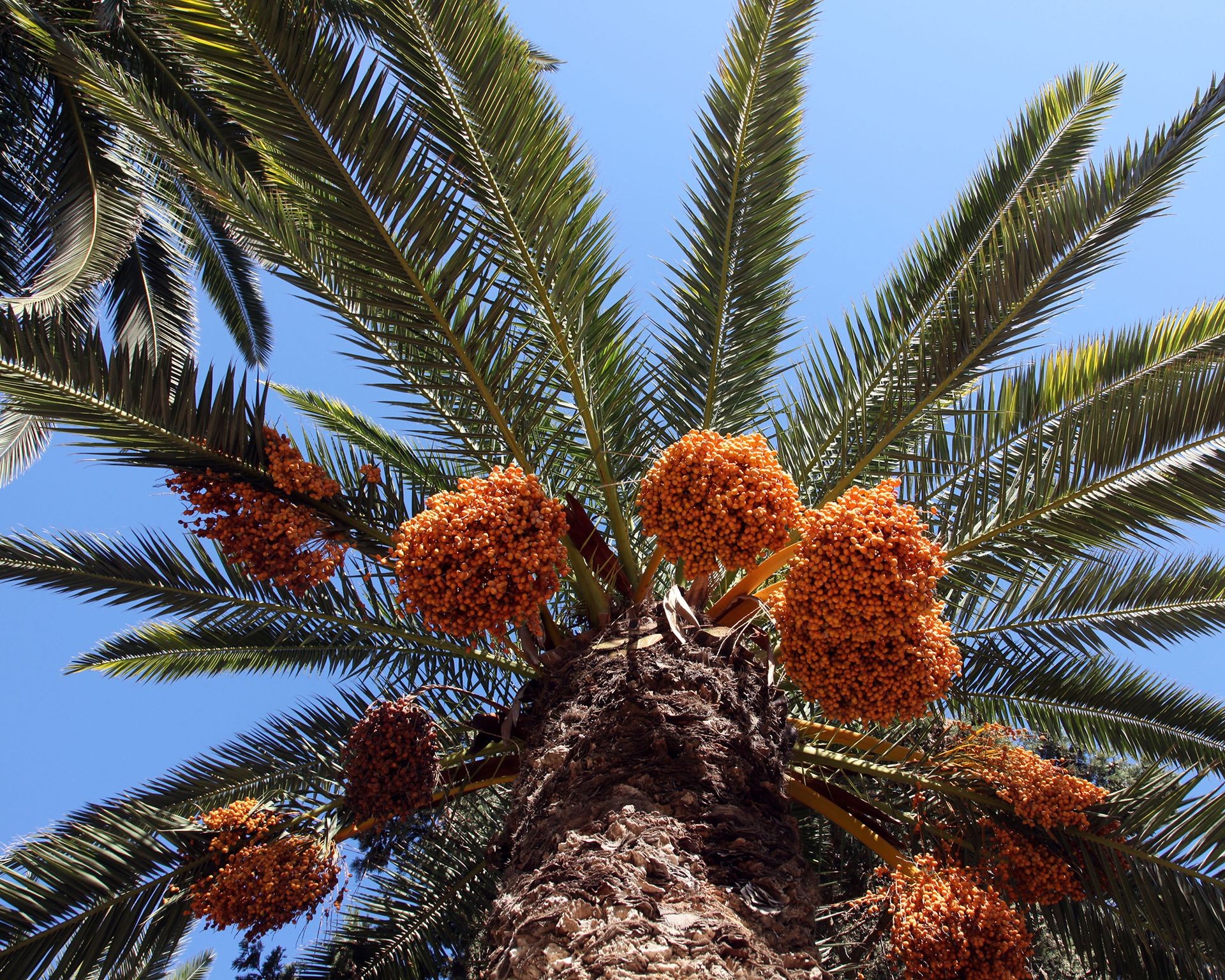 A close-up view of the fronds and trunk of a Phoenix dactylifera date palm tree
A close-up view of the fronds and trunk of a Phoenix dactylifera date palm tree
Date palms flourish in heat and require a full-sun location with well-draining soil. For successful fruit production, you typically need both a male and a female tree. Water the palms for the first few months after planting to aid establishment. After this initial period, minimize watering, as excessive moisture can actually negatively impact fruit development. Fertilizing in early spring is beneficial for healthy growth and fruiting.
5. Olive
Evergreen olive trees (Olea europaea) are iconic symbols of the Mediterranean and are perfectly suited to hot, arid conditions. Their versatile fruits are a staple in countless cuisines worldwide.
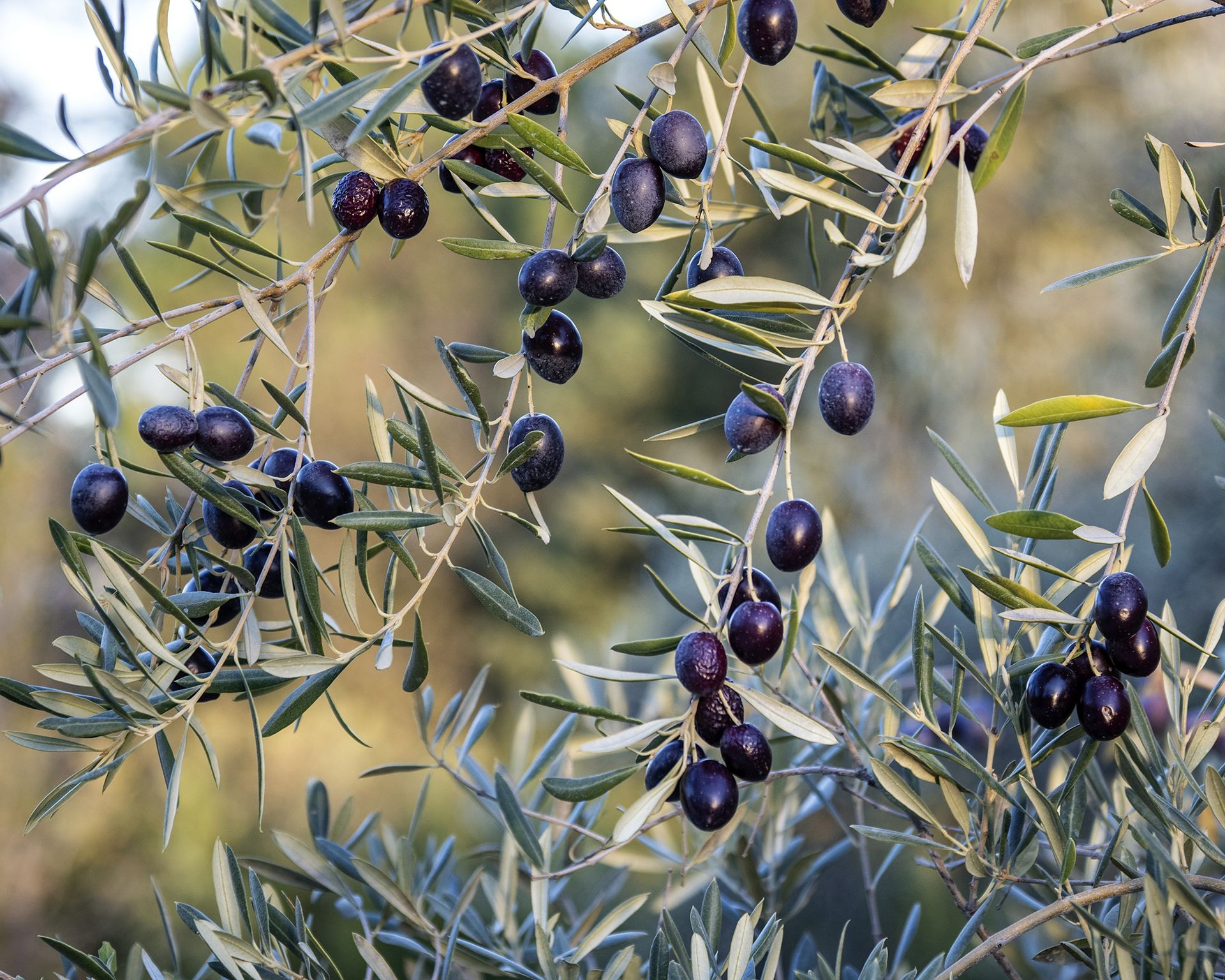 A branch heavy with ripening black olives
A branch heavy with ripening black olives
Olive trees demand a full-sun position and well-draining soil. To encourage better fruit yields, planting more than one variety relatively close together is recommended for cross-pollination. While highly drought-tolerant once mature, they require regular watering during their first year to build a strong root system. Pruning is minimal, focusing mainly on shaping the tree and removing any dead or damaged branches. For those in cooler climates where olives might struggle to fruit or survive winter, growing them in containers allows you to move them to a protected location during the coldest months.
6. Mulberry
Mulberry trees (Morus species) are native to both Asia and North America and offer fast-growing shade along with delicious berries. The berries are somewhat delicate and perishable, making them a special treat rarely found in typical grocery stores – a perfect reason to grow your own!
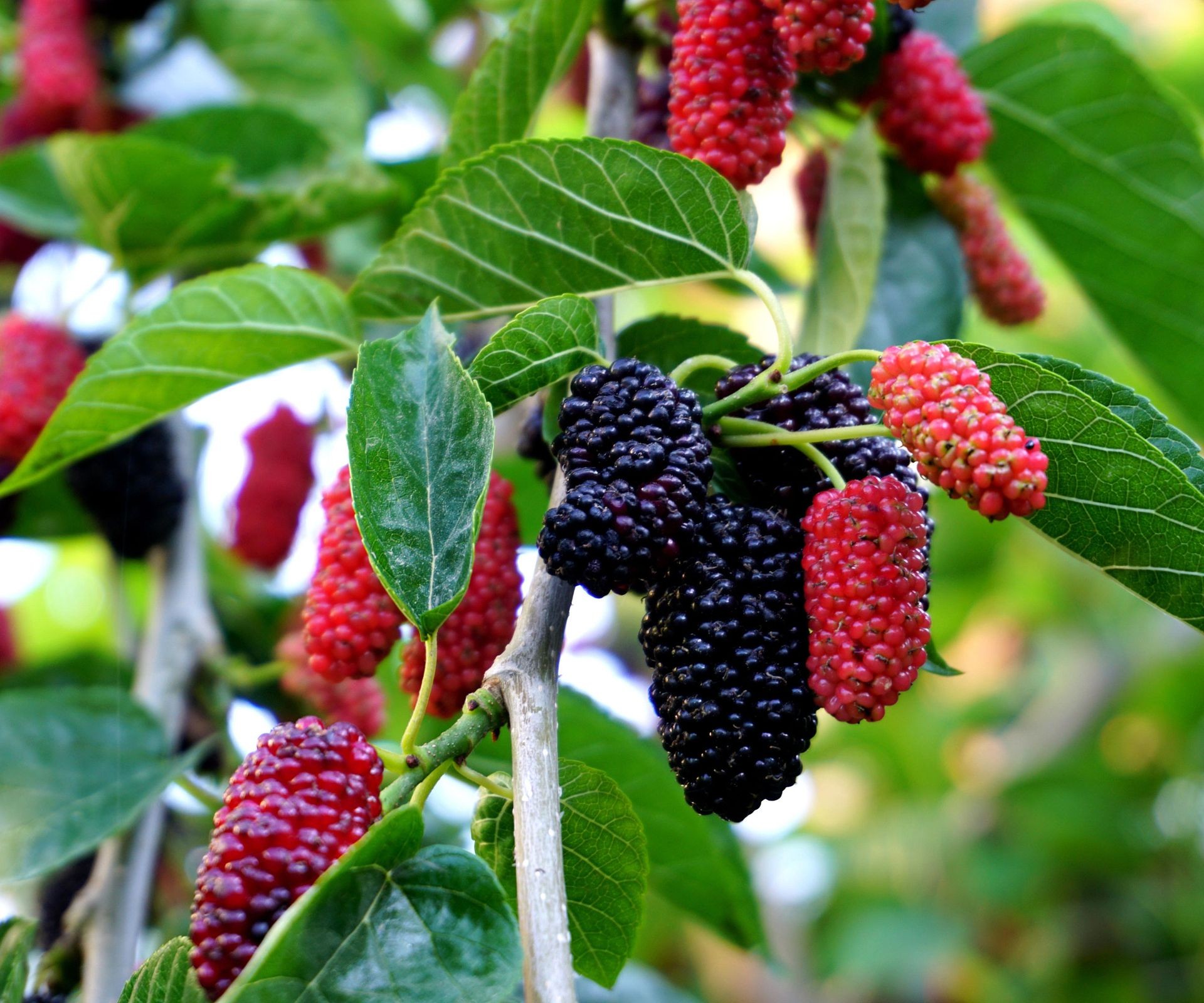 A mulberry branch laden with clusters of red and black fruits
A mulberry branch laden with clusters of red and black fruits
Mulberries are known for their resilience and remarkable drought tolerance, requiring minimal intervention regarding watering, fertilizing, or pruning once established. They can become quite large, so select a planting site away from structures or paved areas, as the fallen fruit can cause stains, and they are very attractive to birds. Hand-pulling any volunteer seedlings that sprout is a good practice, and if choosing varieties, consider opting for the less aggressive red mulberry over potentially invasive white mulberry strains.
7. Loquat
Loquat trees (Eriobotrya japonica) are another excellent choice for hot, dry climates and make attractive landscape trees with their lush foliage. The small fruits have a flavor profile often described as a mix between an apricot and a plum, ranging from sweet to slightly tangy depending on the variety. They are wonderful eaten fresh or transformed into jellies, jams, and baked goods.
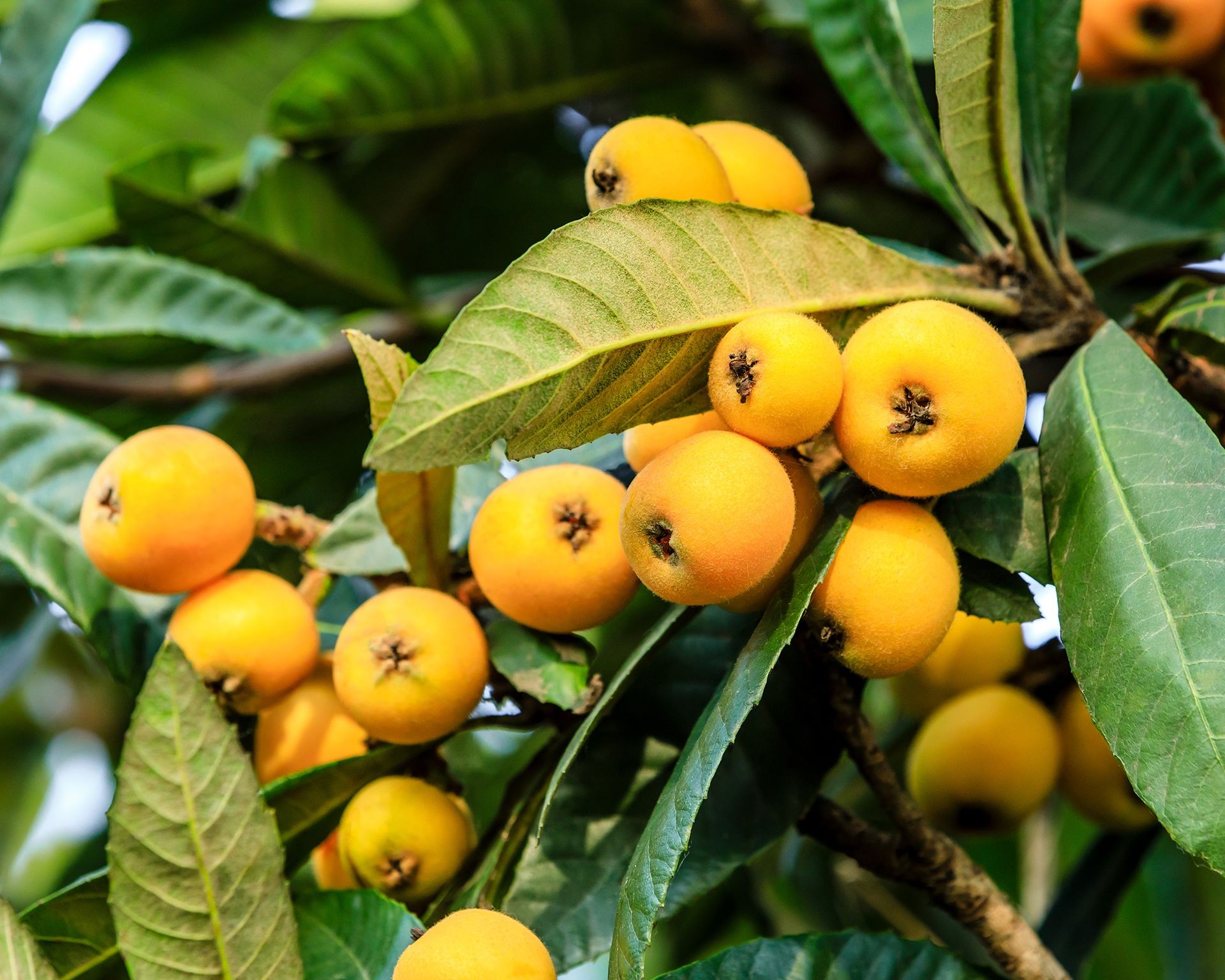 Clusters of small, orange loquat fruits on a tree
Clusters of small, orange loquat fruits on a tree
Hardy and drought-tolerant once mature, loquat trees still need consistent watering during their initial growth phase to establish a healthy root system. Choose a full-sun location with well-draining soil that is slightly acidic to neutral. Keeping the area around the base free of weeds and applying mulch is beneficial. Loquat trees benefit from regular fertilization, perhaps three times during the growing season, to support healthy growth and fruit production.
8. Citrus Trees
While not all citrus varieties are equally drought tolerant, many common types possess a notable ability to withstand drier conditions compared to other fruit trees. Their ability to handle aridness generally improves significantly as the trees mature.
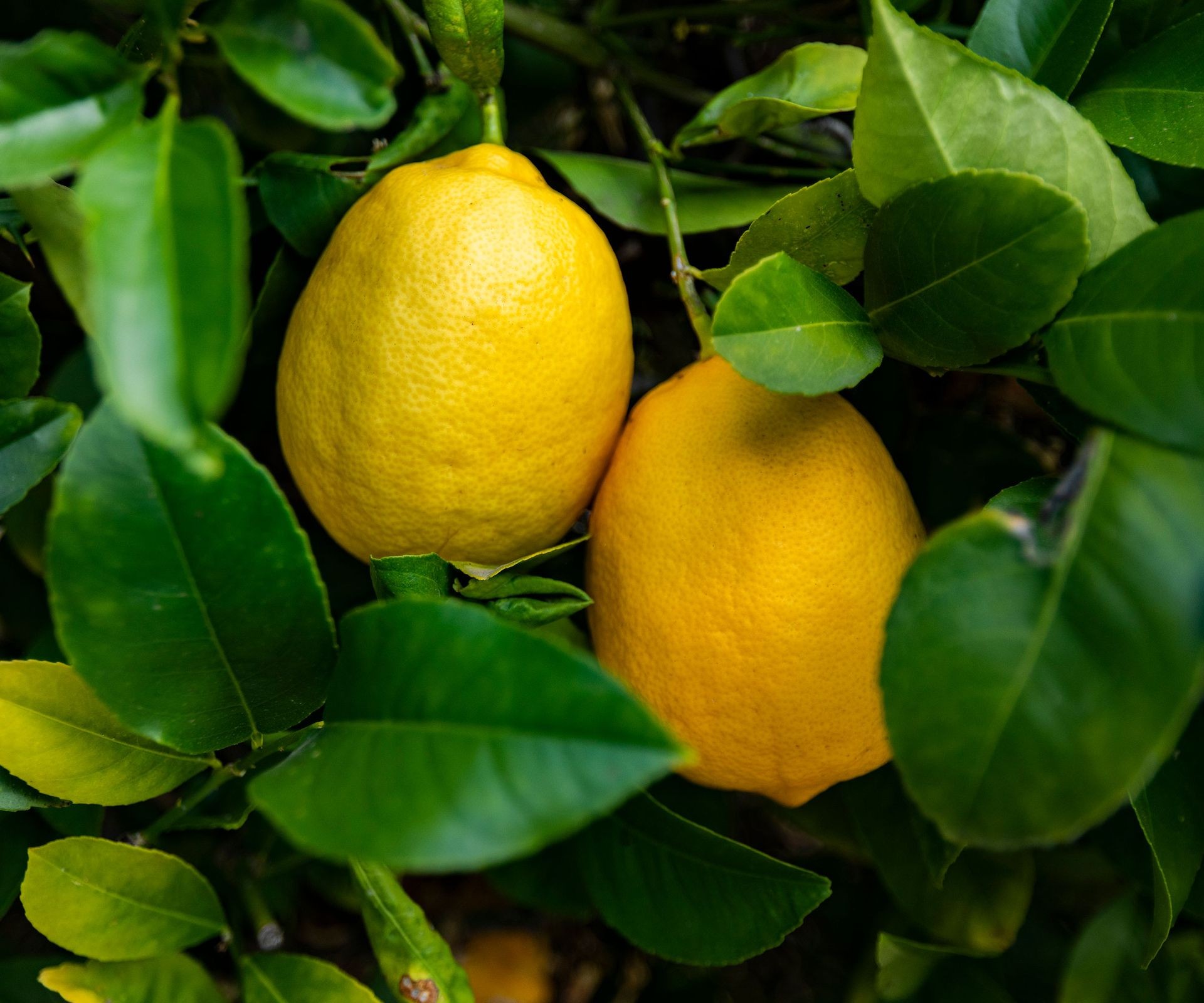 A Meyer lemon tree growing in a terracotta container
A Meyer lemon tree growing in a terracotta container
Options exist for various warmer climate zones, and like many other fruit trees, citrus can be successfully grown in containers in cooler areas if moved indoors for winter. However, be mindful that container-grown citrus will need more frequent watering than those planted in the ground. Varieties like grapefruits and satsumas are often considered among the most drought-tolerant citrus options, while kumquats show moderate tolerance, and lemons and limes have some ability to handle dry spells. Plant citrus in a full-sun spot with well-draining soil. During their establishment phase, water deeply but less often to encourage the development of deep, resilient roots. Mulching around the base is also key to retaining soil moisture.
Conclusion
Choosing drought-tolerant fruit trees is a positive step towards creating a more sustainable and resilient garden. These trees offer not only the satisfaction of harvesting your own delicious fruit but also contribute to water conservation efforts, which are increasingly important for home gardeners. From the luscious fig to the resilient mulberry, there’s a variety suited for many landscapes and tastes.
Ready to embark on your water-wise fruit tree journey? At Biogarden.Asia, we are passionate about helping you cultivate healthy, productive gardens using smart, sustainable practices. Explore the possibilities and discover the resources you need to grow these amazing trees and enjoy nature’s bounty responsibly.
References
- Biogarden.Asia Horticultural Research Archives
- Expert Consultations on Arid Climate Agriculture
- Academic Journals in Pomology and Sustainable Gardening
- Field Observations and Trial Data from Biogarden Cultivation Sites



